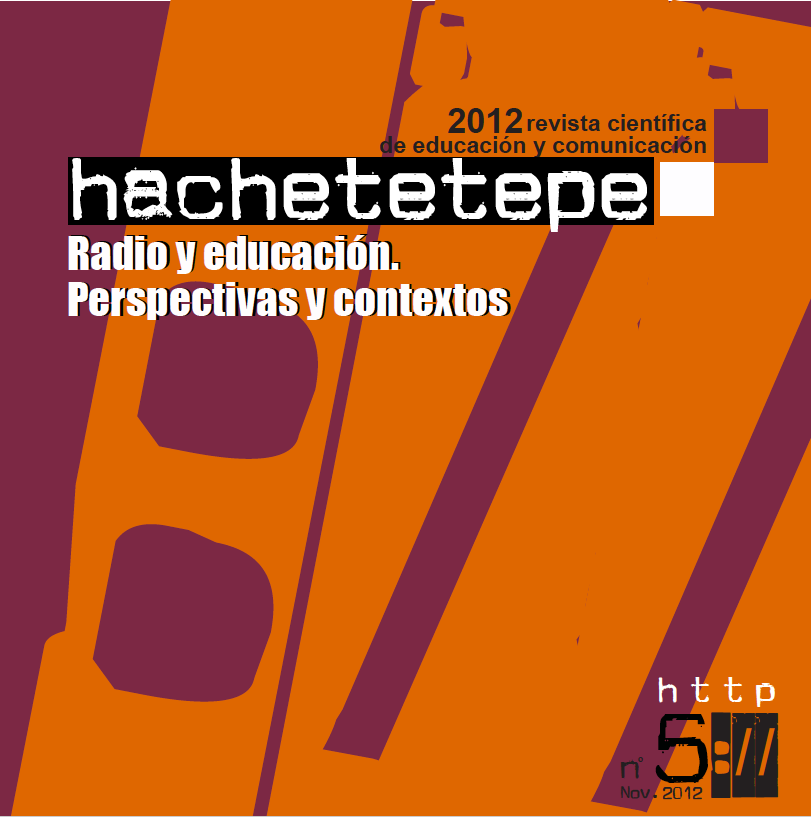The Education Partner Radio

Info
Abstract
As a principal objective we propose to research the educative dimensions that radio has integrated in its programs as an important part of its social function. Valuable experiences in the past show that there are new inroads to be made in formative fields. The medium of radio with educative ends is a valid tool that that helps support educative and formative endeavors within society. We shall sum up the historic role educative radio has played within an institutional framework and how it attempts to compete with commercial radio. Radio as a medium can be a great help in career training and for educative purposes. Its principal goal is to regenerate itself as an educative medium through creative processes. Its future is linked to the necessity to rethink its role within distinct training areas.
Keywords
Downloads
How to Cite
License

This work is licensed under a Creative Commons Attribution-NonCommercial-NoDerivatives 4.0 International License.
Those authors who have published with this journal, accept the following terms:
- They will retain their copyright and guarantee the journal the right to first publication of their work, which will simultaneously be subject to the Creative Commons Attribution License . They may be copied, used, disseminated, transmitted and publicly displayed, provided that the authorship, url, and magazine are cited, and are not used for commercial purposes. No derivative works are allowed.
- They may adopt other non-exclusive license agreements for the distribution of the published version of the work (e.g., deposit it in an institutional telematic archive or publish it in a monographic volume) provided that the initial publication in this journal is indicated.
- Disseminate your work through the Internet (e.g., in institutional telematic archives or on your website) once the manuscript is accepted, which may lead to interesting exchanges and increased citations of the published work. (See The effect of open access).
Hachetetepé. Scientific journal of education and communication does not charge a fee for the submission of manuscripts or for the publication of its articles.
References
Bartolomé, D. y Sevillano, M.L. (1998). Enseñanza-aprendizaje con medios de comunicación y nuevas tecnologías. Uned: Madrid
Cebrián, M (2008) La radio en Internet. De la ciberradio a las radios sociales y a la radio móvil. La Crujía: Buenos Aires.
Cebrián, M (2007). Modelos de radio. Desarrollo e innovación. Fragua: Madrid
Sevillano, ML. (Coord.) (2009). Digitalización y oportunidades de formación. Eduforma: Sevilla
Sevillano, M. L y Quicios, M.P. (2012). Indicadores del uso de competencias informáticas entre estudiantes universitarios, en Teoría de la Educación, 24 (1); 151-182
Sevillano, M. L. y Ricoy, M. C. (2011). “Competencia necesarias para la utilización de las principales herramientas de Internet en la educación”, en Revista de Educación, 356; 483-507

